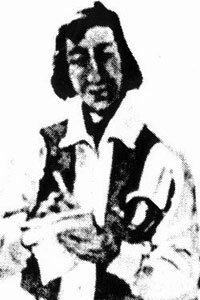Peter Fidler, born 1769 in Bolsover, Derbyshire, England, signed on as a labourer for the Hudson’s Bay Company in 1788. On his arrival in Canada, he was trained by Philip Turner, the company’s factor, as a surveyor. Fidler did his job with such accuracy that his maps are referred to in modern times. He used this same accuracy for detailed drawings and descriptions of the flora and fauna he found as he worked his way across the Prairies.
When he became fort master for the company, he carried seeds wherever he went. He planted gardens at all the forts and these gardens were grown as far north as York Factory. With many forts established, he turned his attention to the agricultural prospects of the West. He studied soil samples from the different fort sites and planted wheat and barley. Potatoes were introduced in 1780 and became part of a staple diet at the forts. The potato, turnip and other vegetable crops failed due to drought conditions. These crops yielded well for four years commencing in 1812. In that same year, the barley crops were destroyed by a grasshopper infestation. Fidler noted that this occurred every 18 years.
In 1812, the Selkirk settlers came in from York Factory. Fidler taught them how to build homes, plant gardens and grow crops. He had purchased a bull and a cow in England for the handsome price of £100. These animals, which were named Adam and Eve, produced offspring in the settlement. He also brought a cock into the settlement and thus poultry was introduced.
Fidler faced adversity. His forts, gardens and crops were frequently destroyed by enemy fur trading companies and the Indians. He never quit rebuilding and replanting. Again and again his story is one of bravery, stamina and above all loyalty to the Hudson’s Bay Company and Canada.
In 1819, Fidler retired to Fort Dauphin. There he spent his remaining years caring for his garden and wheat field. He recorded that there was a new agricultural event flourishing near Fort Dauphin, a maple sugar industry.
Fidler and his wife, Mary, a Cree woman, had 14 children of which 11 survived. Fidler died in 1822. He was buried at Fort Dauphin. The memory of this remarkable man will remain forever in the minds of his descendants and admirers. He truly was “MANITOBA’S JOHNNY APPLESEED”.


